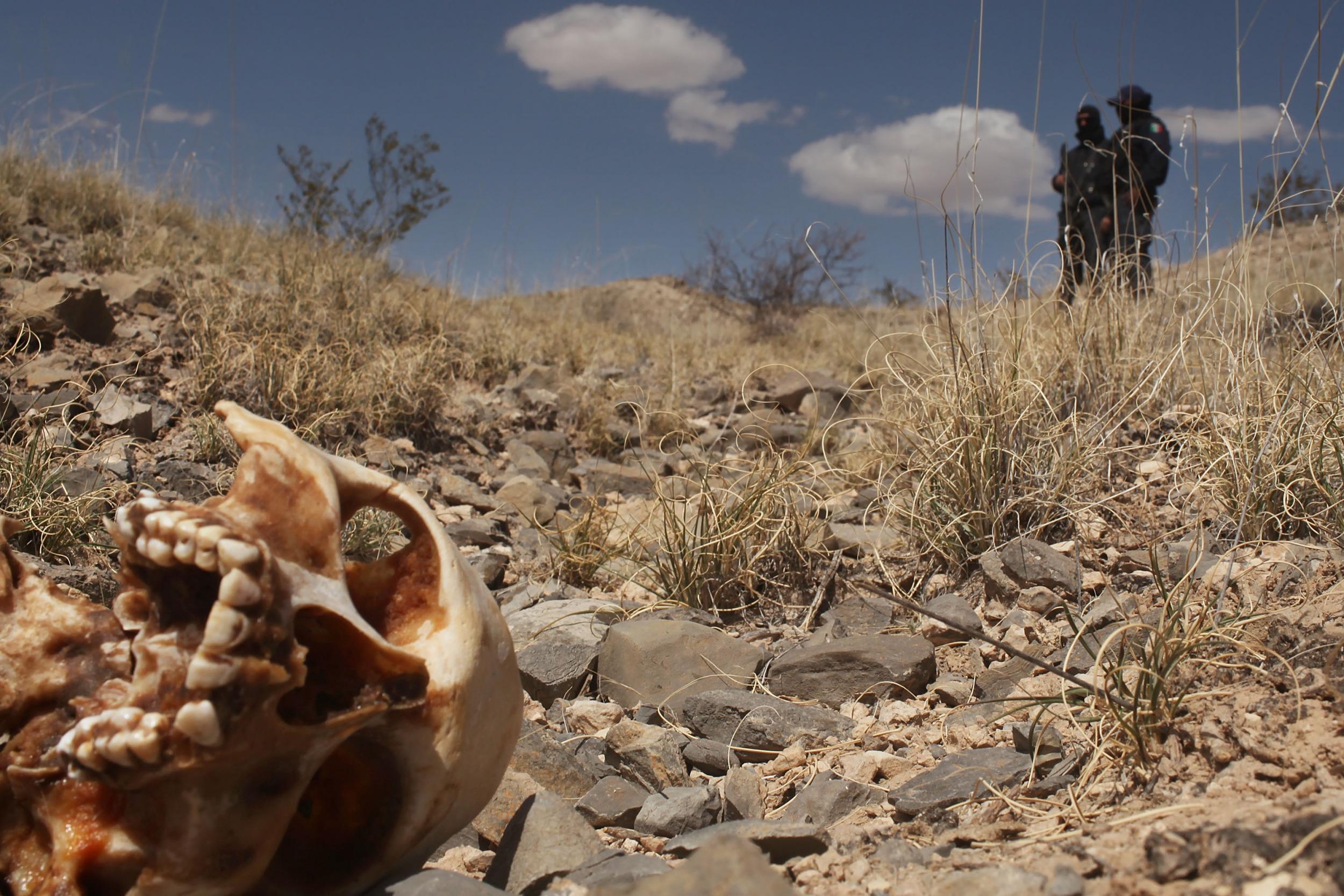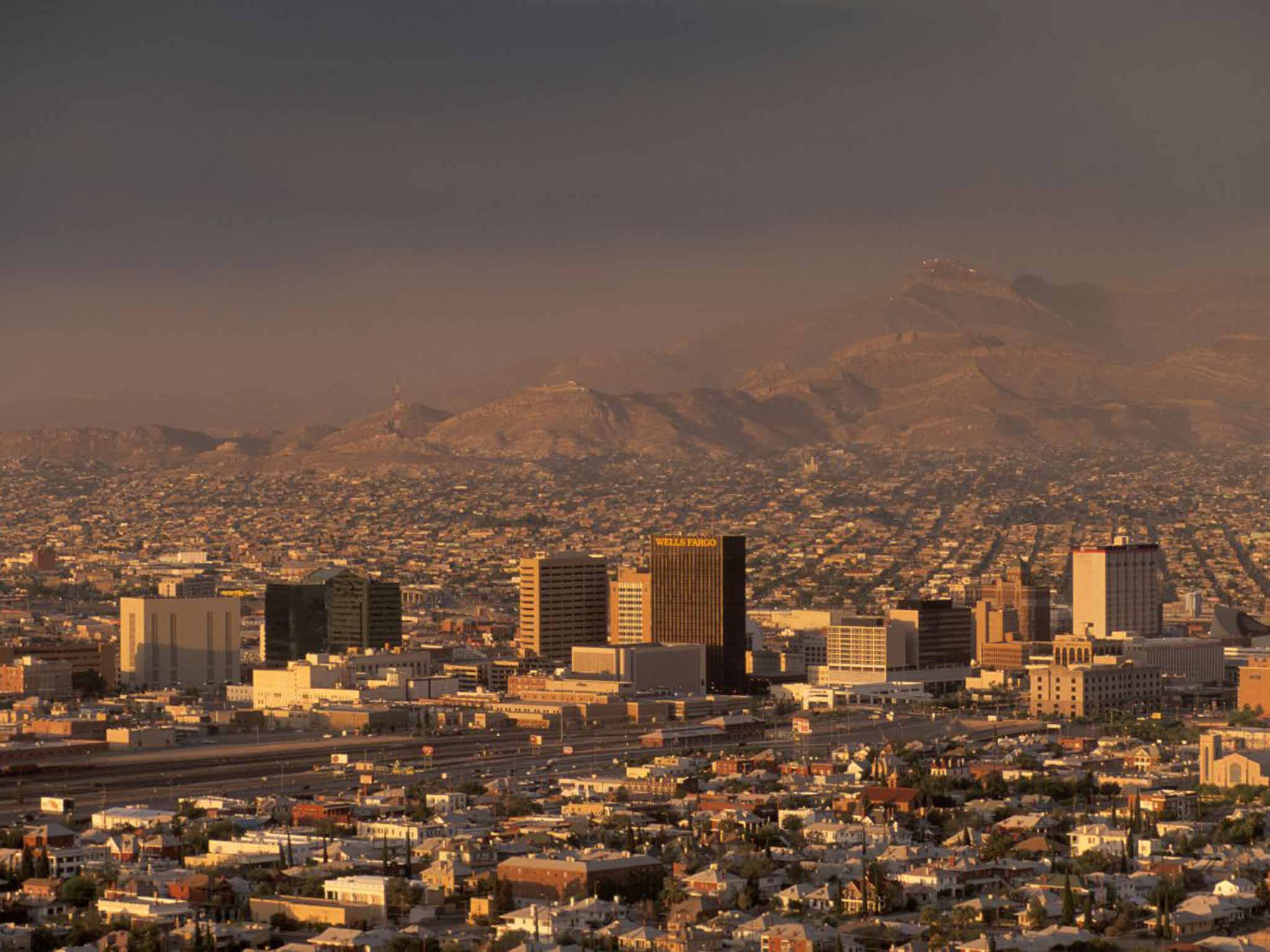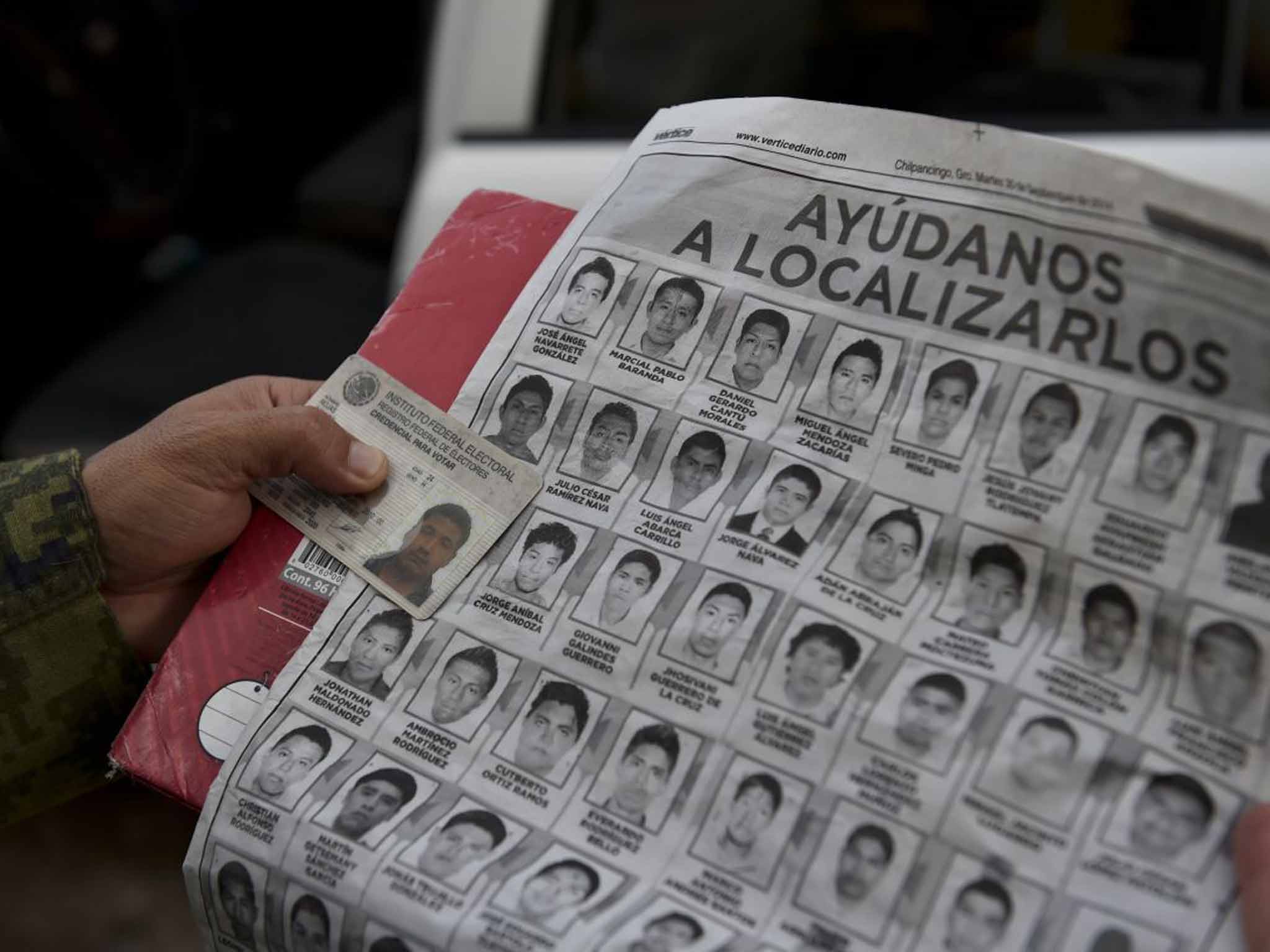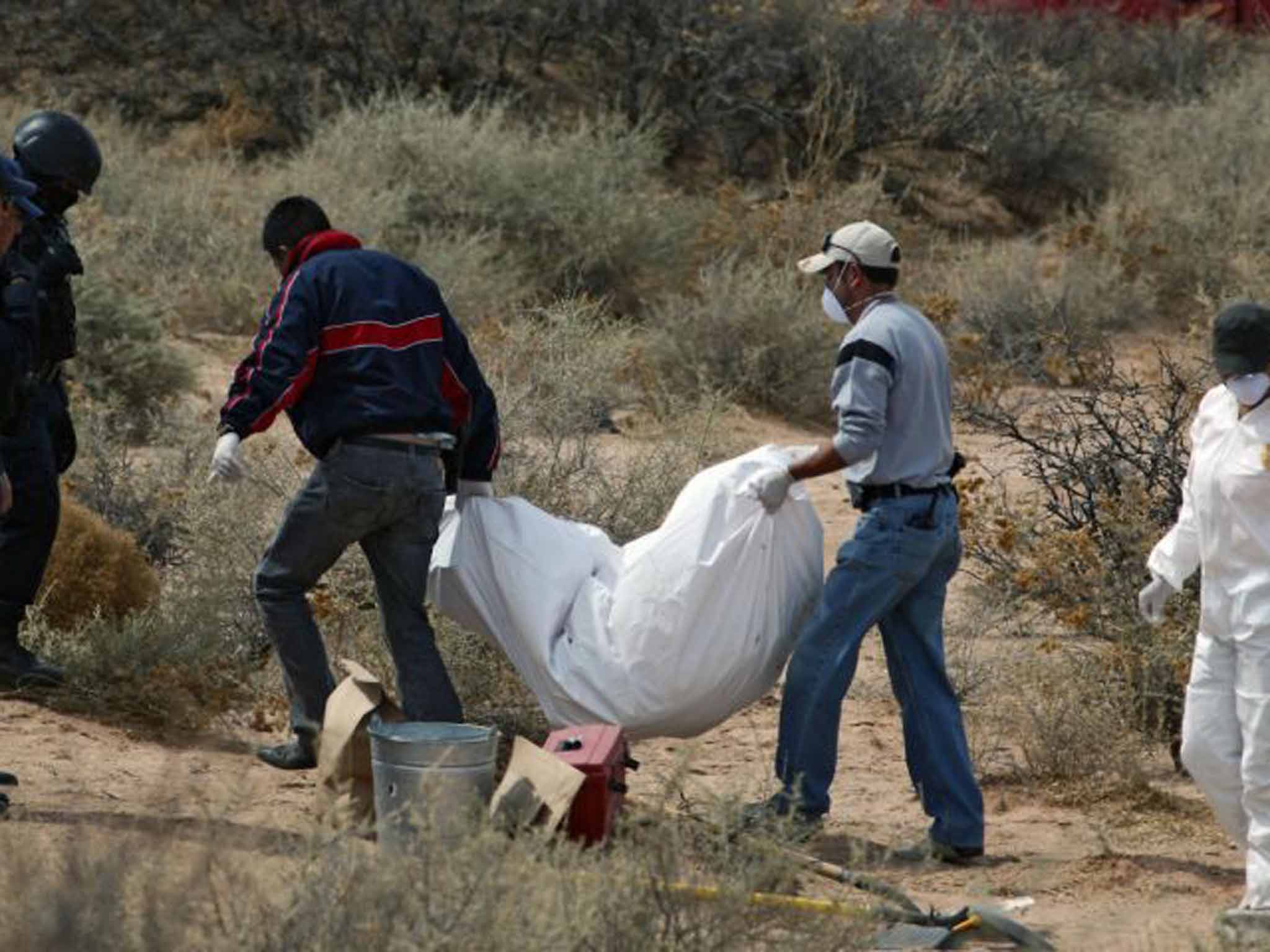Why billionaire drug warlords in Latin America owe their power to white-collar crooks from the US
This is no longer a problem that politicians can afford to ignore. The gangster economy affects people now: from the petrol in your car, to the gold in your jewellery, to your tax pounds (or euros, or dollars) financing the war on drugs

A chain of crime wars is currently strangling Latin America and the Caribbean, drenching it in blood. And the first link in the chain is found in the US. Specifically, in a Barnes and Noble bookshop in a mall in El Paso, Texas.
I am sitting in the bookshop café, nursing my third cup of coffee and flicking through a pile of new books. As you do with new books, I am eyeing the photos, skimming the intros, just feeling and smelling the paper. I am also waiting for a drug trafficker who has spent four decades delivering the products of Mexican gangsters to all corners of the US.
The man I am waiting for is no criminal warlord controlling a fiefdom in Latin America; he's a white New Yorker with a university education. That is why I want to start the story here. Latin American journalists complain that the US side of the equation is never examined. Who are the partners of the cartels wreaking havoc south of the Rio Grande, they ask? Where is the American narco? Here, I found one.
A curious twist of fate led me to this meeting. A fellow Brit was cycling through the south-west US on an extended holiday. Texas was nice, but he fancied something edgier, so he slipped over the border to Chihuahua, Mexico. Unwittingly, he entered one of the most violent spheres in the Mexican drug war, venturing into small towns to the west of Ciudad Juárez, at the time the world's most murderous city. He didn't do too badly, hanging out in cantinas and raising glasses with shady locals – until some gangsters held him in a house, threatened to cut his head off and got him to call his wife in England and plead for a ransom payment.
Attacks on wealthy foreigners in Mexico are actually very rare, but there have been sporadic cases, some of them deadly. In this case, the thugs had jumped at an opportunity that fell in their laps. Thankfully, they released the Brit on receipt of the cash, and he made it home unscathed. He kept in contact with one of the people he had met on the border, an older man called Robert. While Robert knew the kidnappers, he apparently wasn't involved. He is the man I am going to meet now, one of the gangsters' US connections.

The British cyclist put us in touch, and I talked to Robert by email and then phone to arrange the get-together. He lives on the Mexican side of the border. But I told him I didn't want to go there after the kidnapping, and suggested we meet in El Paso, a stone's throw from Juárez, but one of the safest cities in the US. In a Barnes and Noble bookshop. Who would hold you up in a Barnes and Noble?
As I finish my drink, I spy Robert strolling toward me. He is in his sixties, in jeans and a baseball cap, with sun-worn skin and a raspy voice. I get yet more coffee, and we chat. He's good company. Soon we decide we want something stronger and move on to a cowboy-themed bar in the mall where they serve local brews in ridiculous-size glasses. I hear Robert's tale as we sip from the flagons.
It goes back to 1968, when the US was in the midst of the hippie movement and fighting its hottest Cold War battle in Vietnam; when dictatorships ruled most of Latin America, and a recently martyred Che Guevara inspired guerrillas across the continent. Robert is from upstate New York, but in 1968 he went to university in New Mexico. There he had the fate of landing a roommate from El Paso with a cousin in Ciudad Juárez. His roommate told him he could buy marijuana for $40 a kilo from his cousin. This lit a fuse in Robert's mind: he knew that, back home in New York, this amount sold for $300.
The basic business of importing is buying for a dollar and selling for two. But with drugs, Robert realised, he could buy for a dollar and sell for more than seven. And he didn't even need to advertise. This was after the summer of love, and American youngsters were desperate for ganja from wherever they could get it.
It is hard for most of us to fathom a business with a mark-up of 650 per cent. You put in 1,500 bucks and you get back more than 10 grand. You put in 10 and get back 75. And in two more deals you can be a multi-millionaire. Narco finances turn economics inside out. Robert bought houses and nightclubs with suitcases of cash.
However, his drug-dealing dream hit a wall in the late 1970s when he was nabbed by agents from the Drug Enforcement Administration. This is the flip side of narco-economics. Robert splurged on lawyers, got his assets seized and served close to a decade in prison. Yet after he got out, he went back into the trade, moving ganja and a little cocaine with a new generation of Mexican traffickers. He carried on past middle-age, through marriages and divorces, booms and busts, through the end of the Cold War and the opening of democracy across the Americas. By the time he hit his sixties, he suffered from chronic asthma and heart disease. And he was still smuggling weed.

When Robert started trafficking drugs, his Mexican colleagues were a handful of growers and smugglers earning chump change. They needed Americans like him to get into the market. But over the decades, the narco networks grew into an industry that is worth tens of billions of dollars and stretches from Mexico into the Caribbean to Colombia to Brazil.
South of the border, the cartels spent their billions building armies of assassins who carry out massacres comparable to those in war zones and outgun police. They have diversified from drugs to a portfolio of crimes including extortion, kidnapping, theft of crude oil and even wildcat mining. And they have grown so much that they control the governments of entire cities in Latin America.
“Back in the old days, it was nothing like this,” Robert says. “They were just smugglers. Now they prey on their communities. They have become too powerful. And many of the young guys working for them are crazy killers who are high on crystal meth. You can't deal with these people.”
I ask Robert if he feels guilty about pumping these organisations with cash year after year. They could never have grown so big without working with Americans. He looks into his glass for a while and sighs. “It is just business,” he says. “They should have legalised many of these drugs a long time ago.”
Flip from El Paso over the Rio Grande and 1,400 miles south onto a hillside in southern Mexico. I am in the mountains where traffickers grow marijuana and produce heroin. The fate of these hills is locked with that of smugglers in Texas and drug-users across America by the pretty green and pink plants here. The hill is beautiful, thick with pine trees and bright orange flowers.

The smell of death is overwhelming. It's like walking into a butcher's shop stuffed with decaying meat: putrid, yet somehow a little sweet. While I would describe the smell as sickening, it's not noxious. It's a movie cliché that people throw up when they see or smell corpses. That doesn't happen in real life. Corpses don't make you physically nauseous. The sickness is deep down, more an emotional repulsion. It's the smell and sight of our own mortality.
The stench of rotting human flesh is all over this hill from a series of pits where police and soldiers are pulling out corpses. They are dank, maggot-ridden holes that the victims probably dug themselves. The corpses are charred, mutilated, decomposed.
In Mexico, they call this a narcofosa, or drug-trafficking grave. But many of the victims here are neither drug traffickers nor in any way connected to the world of narcotics. They are shopkeepers, labourers, students who somehow ran afoul of a local cartel called the Guerreros Unidos, or Warriors United, and the corrupt police officers on their payroll. The troops dig up 30 corpses on this site, near the town of Iguala. And it's just one of a series of narcofosas dotting these hills.
Some of the corpses have been here for months, but no one came searching – until an atrocity that made world headlines. On 26 September 2014, Iguala's police and their colleagues, the Warrior gunmen, attacked student teachers, killing three and abducting 43. The global media finally learned where Iguala was. How could 43 students disappear off the face of the earth? It sounded like Boko Haram in Nigeria kidnapping schoolchildren, but this was right next to the US.
Thousands of troops poured in, uncovering graves like the one I am standing in. They followed the trail to a dump 10 miles away. Mexico's attorney general said the Warriors murdered the 43 there, burning their corpses on a huge bonfire and throwing the remains into a passing river. But family members refused to believe the government, which has a history of cover-ups to protect corrupt officials. A panel of independent experts also criticised the findings and urged a renewed investigation.
Mexico seemed to have become numb to murder. Between 2007 and 2014, drug cartels and the security forces fighting them killed more than 83,000 people, according to a government count. Some claim it was many more. As a reporter, I covered massacres where nearby residents seemed eerily detached. When an individual goes through a traumatic experience, the gut reaction is to block it out. Communities do the same. People became weary of killers, cartels and carnage. Victims become statistics.
Iguala changed that. The fact that the victims were students, the blatant police involvement, the inept government response – all shook Mexican society. People took to the streets in hundreds of thousands to protest against narco corruption and violence. The faces of the disappeared students filled posters on Mexico City walls and were held up in solidarity from Argentina to Austria to Australia. They were humans, not numbers.
The bloodshed in Mexico has grabbed the world's attention as it runs right up to the Rio Grande (and sometimes into the US). But fighting between shady criminal gunmen and trigger-happy troops rages in many corners of the Americas. In the favelas of Brazil, the crime “commandos” are in close urban combat with police and rivals, a conflict that has killed even more than in Mexico – and where US Navy Seals go to train. Honduras became the most murderous country outside a declared war zone as Mara gangs displace thousands, some who flee to the US as refugees. The ghettos of Kingston, Jamaica, are the killing fields of posses, along with one of the most homicidal police forces in the world.
Why are the Americas awash in blood at the dawn of the 21st century? How, after the US declared Cold War victories in the region, did it unravel so fast? And why are US politicians so quiet about these battles that have killed more than many traditional war zones?
In this landscape, a new generation of kingpins has emerged along with their own cult followings and guerrilla hit squads. These super-villains, from Mexico to Jamaica to Brazil to Colombia, are no longer just drug traffickers, but a weird hybrid of criminal CEO, gangster rock star and paramilitary general. They fill the popular imagination as demonic anti-heroes. Not only do they feature in underground songs in the drug world; they are also recreated in movies and even video games.
Between 2000 and 2010, murder rates rose 11 per cent in Latin America and the Caribbean, while they fell in most of the world. Eight of the 10 countries with the highest homicide rates are now in the region, as are 43 of the world's 50 most violent cities. When you tally up the total body count, the numbers are staggering. Between the dawn of the new millennium and 2010, more than a million people across Latin America and the Caribbean were murdered. It's a cocaine-fuelled holocaust.
Politicians are confounded about how to handle this gangster power and bloodshed. Governments from Mexico City to Brasília send out troops with shoot-to-kill policies while denying they are fighting low-intensity wars. After shocking attacks on police in São Paulo, officers went on a revenge killing spree and are alleged to have murdered almost as many people in 10 days as Brazil's military dictatorship did in two decades. In some cases, politicians are in league with the gangsters and are part of the problem. But politicians aren't the sole cause of this mess. Others may not be allied with narco kingpins but genuinely struggle to find a policy that works.
World's 10 deadliest street drugs
Show all 10Washington has no coherent strategy. The US continues to spend billions on a global war on drugs, while there is little enthusiasm at home for the fight. It bankrolls armies across Latin America – and US courts give asylum to refugees fleeing those same soldiers. Diplomats cosy up to their Latin American counterparts by saying they face only generic gang problems, but then Pentagon officials rock the boat by screaming that Mexico is losing control to cartels. Faced with such contradictions, politicians often take refuge in the default option: ignoring it.
But this is no longer a problem that politicians can afford to ignore. The gangster economy affects people now: from the petrol in your car, to the gold in your jewellery, to your tax pounds (or euros, or dollars) financing the war on drugs. The web of the crime families stretches across the hemisphere, leading to all kinds of unlikely places. It spins off to lime prices in New York bars, British secret agents, World Cup soccer stars, bids to hold the Olympic Games and questions over the start of the London riots.
In the summer of 2014, it was linked to 67,000 unaccompanied children arriving at the US southern border, causing what President Barack Obama called a humanitarian crisis. While not all had run from bullets, some showed clear evidence that they would be murdered if they went home. Less publicised was that tens of thousands of adults from the region were arriving on the southern border asking for political asylum. Some people ask why it matters if neighbouring countries fall to pieces. This is one of the reasons.
'Gangster Warlords' by Ioan Grillo (£12.99, Bloomsbury) is published tomorrow
Subscribe to Independent Premium to bookmark this article
Want to bookmark your favourite articles and stories to read or reference later? Start your Independent Premium subscription today.






Join our commenting forum
Join thought-provoking conversations, follow other Independent readers and see their replies
Comments